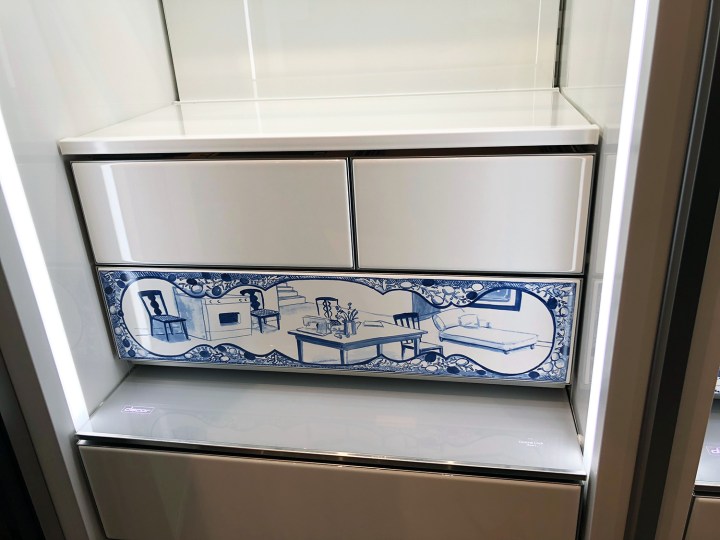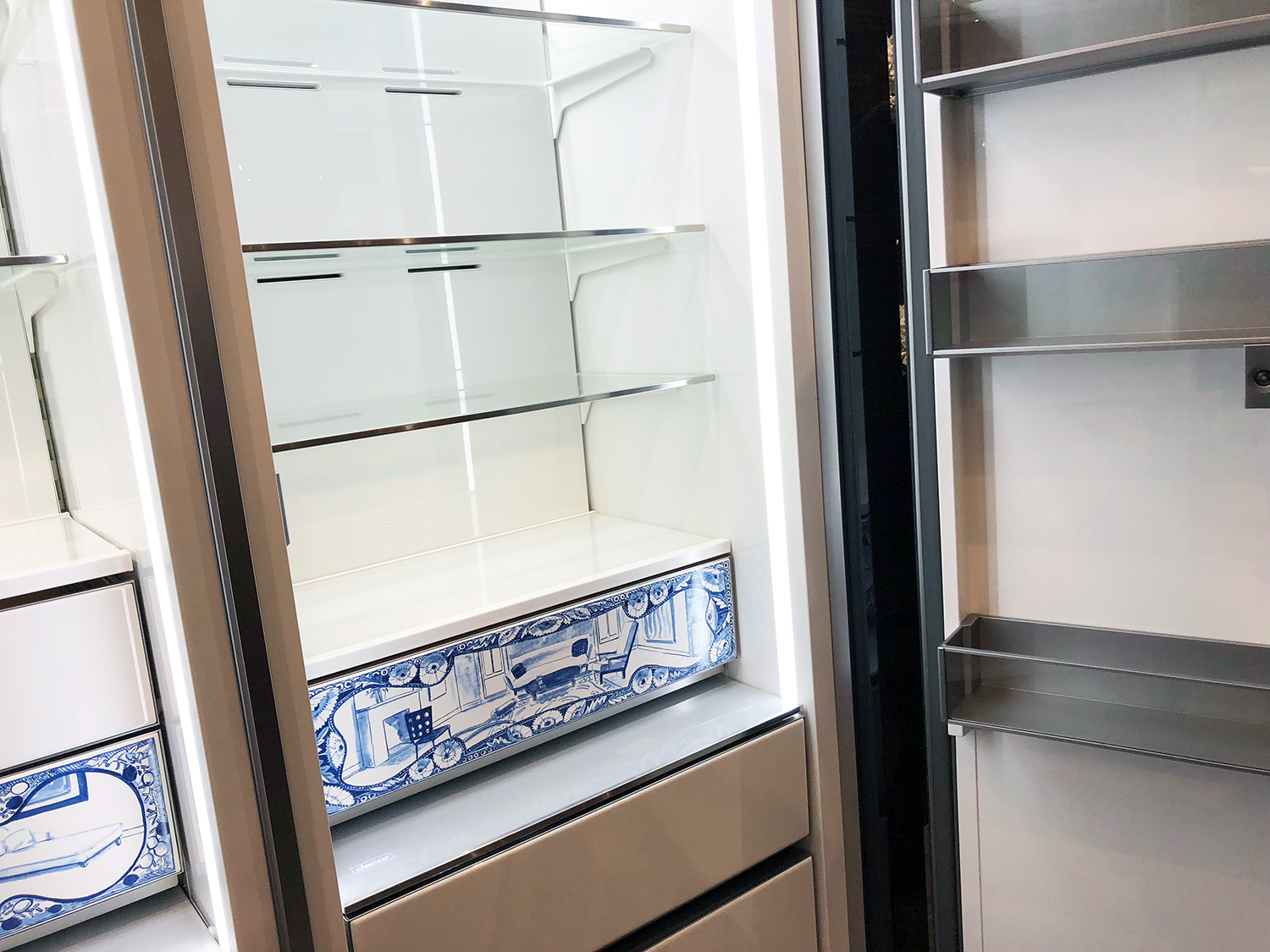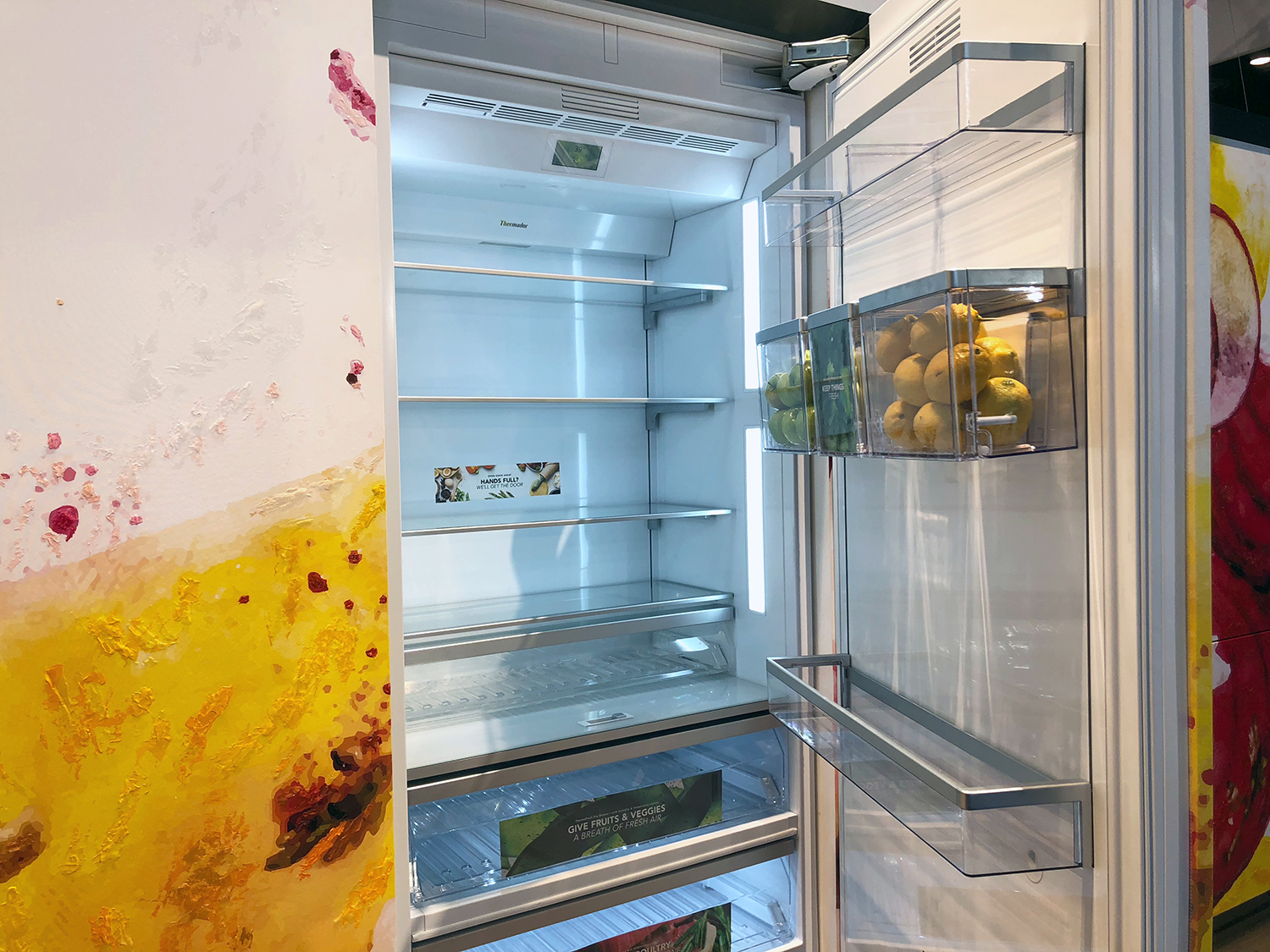
Back in 2016, Samsung acquired Dacor to add some more luxury to its line of refrigerators, ranges, and more. Dacor has done just that, and tujhe Dacor porcelain refrigerator was one of the most unique things we saw at KBIS. White interiors are pretty standard for refrigerators, but the porcelain-lined doors, walls, and top of the Project Blanc are doing a lot more than plastic liners.
“Similar to metal, it has a very stable temperature uniformity, but it’s much higher than metal,” Michael Magnani, director of product marketing for refrigeration at Dacor, told Digital Trends. “So, it’s a very even, very cool, very consistent temperature.” Additionally, the porcelain is also stain- and odor-resistant because it isn’t very porous. It’s also durable and hard to scratch. “It’s probably one of the most cutting edge, high-end materials,” said Magnani.
Though white may seem a bit boring, it actually offers a canvas for porcelain artists that Dacor has partnered with. When you order your fridge (it will be available this spring), you’ll have the option to customize the interior and transform it into a one-of-a-kind work of art.
Though porcelain has been around forever, the features of the Project Blanc are modern, with temperature-control drawers, Wi-Fi connectivity, and cameras that let you check on your food supplies.
Another fridge with a white interior is Thermador’s Freedom 30-inch built-in. Its interior is actually stainless steel, but the company powder-coats it to make it easier to clean. Depending on what kind of foodie you are, you can customize the type of bins you want for the door. You can get all standard style for jars and condiments or add as many “delicate produce” bins as will fit. These bins are designed to keep things like fresh herbs away from ethanol-emitting fruits. The bins are easy to remove from the door, so if you store apples in one, you can take it off and open it away from the fridge to help keep the rest of your produce fresh.
Liebherr, a German appliance maker, also likes to keep things separated in its fridges. Known for its BioFresh system — drawers with temperature and humidity control — the company introduced its 84-inch-tall Monolith at KBIS. It includes a BioFresh Plus drawer for meat and seafood that can be cooled to 28 degrees Fahrenheit for better preservation. To make controlling temperature a bit easier, it included a full-color 2.4-inch touchscreen that changes degree settings as you swipe through, Tinder-style.
One interesting thing about all three of these fridges is that they’re all connected (to the internet, not each other). The Project Blanc works with the Dacor Kitchen app to get the camera view. For Thermador, its fridge is part of the larger Home Connect ecosystem that includes all of the Bosch companies’ smart appliances. Liebherr’s app can help you figure out how long the food you just stowed in a bin will last. The company also says the Monolith’s cameras are smart enough to figure out what you have and can let you know what you need to complete a recipe.
At this point, it’s harder to find a fridge that doesn’t have Wi-Fi than to find one that does.







